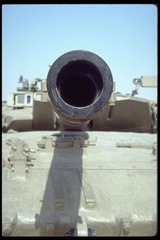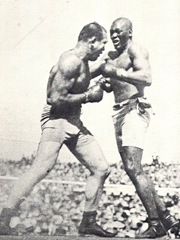


Pat commented to yesterday's post (Boxing Combinations Revisited) by shamelessly plugging his post (Boxing and Aikido), which was inspired by an older post here at TDA, The Three Cs of Sparring: Offense and Defense - repost. Confused? As I reread my own post, then Pat's, I reflected on the nature of fighting, and all combat, as being composed of:
- Approach: Closing with the enemy (getting into range), whether with artillery, rifles, pistols, impact weapons, blades, or hands and feet. This is the point at which a risk is taken. Who moves first? Is it where you think? Who has the advantage of surprise, high ground (reach), longer range weapon, or speed?
- The clash of bodies, transfer of energy via weapon or fist, with damage done, energy expended, then...
- Clearing the engagement, meaning moving back out of range or danger. Clearing properly means you break off the fight when it's advantageous to you, and are not exposed to more danger.
In other words, all conflict is composed of a series of clashes, and he who wins is he who gets in and out safely. It may take different means, but the ends should be the same - stay alive!
Pat properly compares the strikes and movement of boxing with the footwork, techniques, and tactics of Aikido not by contrasting them, but by noting the similarities of the strategies involved.
Look at your fighting or combat system in the same way. How can I get close, damage without absorbing damage, then get back out safely? Adapt your ideas to winning.
Finally, look at how avoiding conflict is the best way to overcome it.

3 comments:
;-) Can't pull anything over on you, can I? Good thoughts. You know, in judo (for example) you learn a bunch of techniques and it can become an unwieldly mass of knowledge unless you can pull it together with some organizing principle that tells you when to pull the trigger on which technique.
Lately, upon the advice of my teacher, I've been looking at the moment of impact - any bump or discontinuity in the 2 peoples' free motion, as the organizing principle. That sudden transfer of energy and what it does to your body not only defines which technique will happen, but it tells you the right time to pull the trigger.
It has really put a new and beneficial spin on my judo to pay attention to that moment of clash.
"in judo (for example) you learn a bunch of techniques and it can become an unwieldly mass of knowledge unless you can pull it together with some organizing principle that tells you when to pull the trigger on which technique."
Pat, as always, thanks for the comments. I think you hit the proverbial nail on the head with that remark - many, if not all, martial arts schools have excellent methods for self-defense or combat beyond what most are taught. What they need is that coherent, "organizing principle," as opposed to another technique or introducing another art. What creates that synergy is a good teacher, one who sees the totality of combat from the big picture, as well as the small. I'd love to hear more on the subject of your second paragraph, "the moment of impact." Sounds like a Seagal movie, by the way! :-)
I agree with your analysis, however I would like to add that what is appropriate for sports-fighting (e.g dancing around the opponent throwing light jabs to annoy and look for openings) is not necessarily appropriate for SD application: in all likelihood on the street attackers will come at you in committed attacks with all they have, if you don't respond in kind (power strikes designed to stop him dead in his tracks) there's a good chance you'll lose. For SD I wouldn't back down but break his defense and continue to press him untill he no longer poses a danger (the avalange-principle), for sports this might be a bad idea since he could counter you or cause you to expend too much energy.
When someone comes at you with a jab it's a sure sign they had training and while a trained attacker can be quite dangerous it's also easier in a way since you at least have a general idea of what might be coming next. Lately I've been in the habit of asking friends and acquaintences of mine (non martial artists) how'd they'd attack for real and nearly always they showed a big, swinging hook/haymaker type of punch: the first time I saw this I was quite perplexed since I was used to dealing with good, clean boxing strikes (jab, cross, hook, uppercut) and in all likelihood if this had happened for real I might have been hit or I'd at least stepped back losing the initiative... Now I train alot on this type of strike (defense, not offensive since it's a pretty stupid and dangerous way to attack someone) and I'm getting more comfortable with it.
Anyway, I'm digressing.
Have a good day,
Zara
Post a Comment